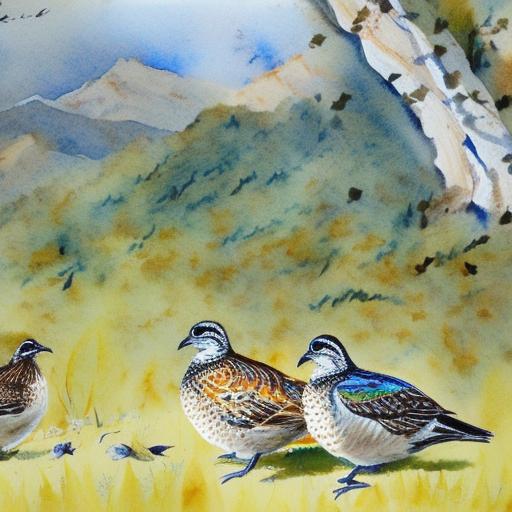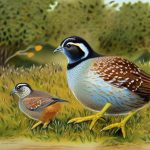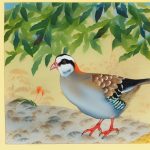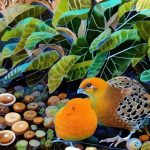California quail, also known as Valley quail, are popular game birds native to the western United States. They are known for their striking appearance, with a distinctive teardrop-shaped plume on their head and a vibrant chestnut and blue-gray plumage. Due to their beauty and gentle nature, California quail have become a popular choice for aviculture enthusiasts and breeders around the world.
Breeding California quail in captivity can be a rewarding experience for bird enthusiasts, as these birds are relatively easy to care for and breed. With the right knowledge and resources, breeders can successfully raise healthy quail and contribute to the conservation of this species. In this article, we will explore the history of California quail in Australia, breeding techniques, housing and enclosure requirements, feeding and nutrition, breeding behavior and reproduction, as well as health and disease management.
Key Takeaways
- California quail breeding is a popular activity for bird enthusiasts and can be done in captivity.
- California quail were introduced to Australia in the 1860s and have since become a popular game bird.
- Breeding California quail in captivity requires careful attention to housing and enclosure requirements.
- Proper nutrition and feeding are essential for breeding California quail successfully.
- Understanding the breeding behavior and reproduction of California quail is important for successful breeding efforts.
The History of California Quail in Australia
The introduction of California quail to Australia dates back to the late 1800s when they were first imported for sport hunting and ornamental purposes. The mild climate and diverse habitats in Australia provided an ideal environment for these birds to thrive, and they quickly established feral populations in various regions across the country. Today, California quail are found in the wild in parts of Australia, particularly in the southern states.
In addition to their presence in the wild, California quail have also become popular among aviculture enthusiasts in Australia. Many breeders have successfully established captive populations of California quail, contributing to the conservation and preservation of this species. Through careful breeding practices and responsible ownership, these enthusiasts have played a crucial role in maintaining genetic diversity and ensuring the welfare of California quail in captivity.
Breeding California Quail in Captivity
Breeding California quail in captivity requires careful planning and attention to detail to ensure the health and well-being of the birds. Before embarking on a breeding program, it is essential to acquire healthy breeding stock from reputable sources to avoid potential health issues and genetic abnormalities. Selecting birds with strong genetics and desirable traits will increase the likelihood of producing healthy offspring with vibrant plumage and robust constitution.
Once suitable breeding stock has been acquired, it is important to provide a suitable environment for the quail to thrive. This includes spacious enclosures with adequate shelter, nesting sites, and access to natural vegetation. Breeding pairs should be housed separately to minimize stress and aggression, as well as to facilitate successful breeding and nesting behaviors. Additionally, providing a balanced diet and access to clean water is essential for maintaining the overall health and reproductive success of the quail.
Housing and Enclosure Requirements for Breeding California Quail
When it comes to housing and enclosure requirements for breeding California quail, there are several key factors to consider to ensure the well-being of the birds. Firstly, it is important to provide spacious enclosures that allow for natural behaviors such as dust bathing, foraging, and social interactions. A minimum of 4 square feet per bird is recommended to prevent overcrowding and reduce stress.
The enclosure should also include suitable shelter such as shrubs, bushes, or artificial structures to provide protection from predators and inclement weather. Additionally, providing nesting boxes or suitable nesting sites is crucial for encouraging breeding behaviors and successful reproduction. These boxes should be placed in quiet, secluded areas within the enclosure to provide a sense of security for the breeding pairs.
Furthermore, it is important to ensure that the enclosure is predator-proof to prevent potential threats from entering and disturbing the quail. This may involve installing secure fencing, predator-proof netting, or using other deterrents such as motion-activated lights or sound devices. Regular maintenance of the enclosure is also essential to ensure cleanliness, hygiene, and the overall well-being of the quail.
Feeding and Nutrition for Breeding California Quail
Feeding and nutrition play a crucial role in the successful breeding of California quail. A balanced diet that meets the nutritional requirements of the birds is essential for maintaining their health, reproductive success, and overall well-being. In captivity, California quail should be provided with a high-quality game bird feed that is specifically formulated for their dietary needs.
In addition to commercial feeds, quail can also benefit from a variety of fresh foods such as leafy greens, fruits, vegetables, and protein sources like mealworms or crickets. These treats can be offered in moderation as supplements to their regular diet to provide additional nutrients and enrichment. It is important to ensure that fresh water is readily available at all times to prevent dehydration and maintain proper hydration levels.
During the breeding season, it is important to provide additional calcium sources such as crushed oyster shells or eggshells to support egg production and prevent calcium deficiencies in breeding females. Monitoring the body condition of the birds and adjusting their diet accordingly is essential for ensuring optimal reproductive performance and healthy offspring.
Breeding Behavior and Reproduction of California Quail

Understanding the breeding behavior and reproduction of California quail is essential for successful captive breeding programs. In the wild, California quail are known for their monogamous mating system, with pairs forming strong bonds that can last throughout the breeding season. In captivity, providing suitable nesting sites and materials will encourage breeding pairs to engage in courtship displays and nesting behaviors.
Female quail typically lay a clutch of 12-16 eggs over a period of 2-3 weeks, with each egg being laid one day apart. Incubation usually lasts around 21 days, during which time the female will diligently tend to the eggs while the male stands guard nearby. Once hatched, the chicks are precocial and will leave the nest shortly after drying off from hatching.
To ensure successful reproduction, it is important to provide a stress-free environment for the breeding pairs and minimize disturbances during the incubation period. Additionally, providing suitable brooding areas with access to heat sources will help ensure the survival and well-being of the chicks during their early stages of development.
Health and Disease Management in California Quail Breeding
Maintaining the health and well-being of California quail is paramount for successful breeding programs. Regular health checks, observation of behavior, and prompt intervention in case of illness or injury are essential for preventing disease outbreaks and ensuring the overall welfare of the birds. Providing a clean environment with good ventilation, proper sanitation practices, and regular parasite control measures will help minimize health risks.
In addition to preventive measures, it is important to have a basic understanding of common health issues that may affect California quail, such as respiratory infections, parasites, nutritional deficiencies, or reproductive disorders. Working closely with an avian veterinarian who has experience with game birds can provide valuable guidance on disease management, treatment options, and preventative healthcare measures.
Furthermore, maintaining biosecurity protocols is crucial for preventing the introduction and spread of infectious diseases within a breeding facility. This may involve quarantine procedures for new birds, limiting visitor access, and implementing strict hygiene practices to minimize disease transmission. By prioritizing the health and welfare of the birds, breeders can ensure the long-term success of their breeding programs while contributing to the conservation efforts of California quail populations.
If you’re interested in California quail breeding in Australia, you may also want to explore the benefits of having a garden chicken coop. According to Poultry Wizard, a well-designed garden chicken coop can provide a safe and comfortable environment for your quail and other poultry. Check out their article on creating a garden chicken coop to learn more about how it can enhance your quail breeding experience.
FAQs
What is the California quail?
The California quail, also known as the Valley quail, is a small ground-dwelling bird native to the western United States and parts of Canada and Mexico. It is known for its distinctive teardrop-shaped plume on its head and its vibrant plumage.
Can California quail breed in Australia?
Yes, California quail can breed in Australia. They have been successfully introduced and bred in various parts of the country, particularly in the southern and eastern regions.
What are the breeding habits of California quail?
California quail typically breed in monogamous pairs, with the male and female forming a strong bond during the breeding season. They build their nests on the ground, often hidden in dense vegetation, and the female lays a clutch of 12-16 eggs.
What is the breeding season for California quail in Australia?
In Australia, the breeding season for California quail typically occurs from late winter to early summer, with peak breeding activity occurring in spring.
What are the key considerations for breeding California quail in Australia?
Key considerations for breeding California quail in Australia include providing suitable habitat with access to food, water, and shelter, as well as ensuring proper management of breeding pairs to minimize stress and maximize reproductive success.
Are there any regulations or restrictions on breeding California quail in Australia?
Breeding and keeping California quail in Australia may be subject to regulations and restrictions, particularly in relation to permits and biosecurity requirements. It is important to check with local wildlife authorities and obtain the necessary permits before breeding California quail.
Meet Walter, the feathered-friend fanatic of Florida! Nestled in the sunshine state, Walter struts through life with his feathered companions, clucking his way to happiness. With a coop that’s fancier than a five-star hotel, he’s the Don Juan of the chicken world. When he’s not teaching his hens to do the cha-cha, you’ll find him in a heated debate with his prized rooster, Sir Clucks-a-Lot. Walter’s poultry passion is no yolk; he’s the sunny-side-up guy you never knew you needed in your flock of friends!







